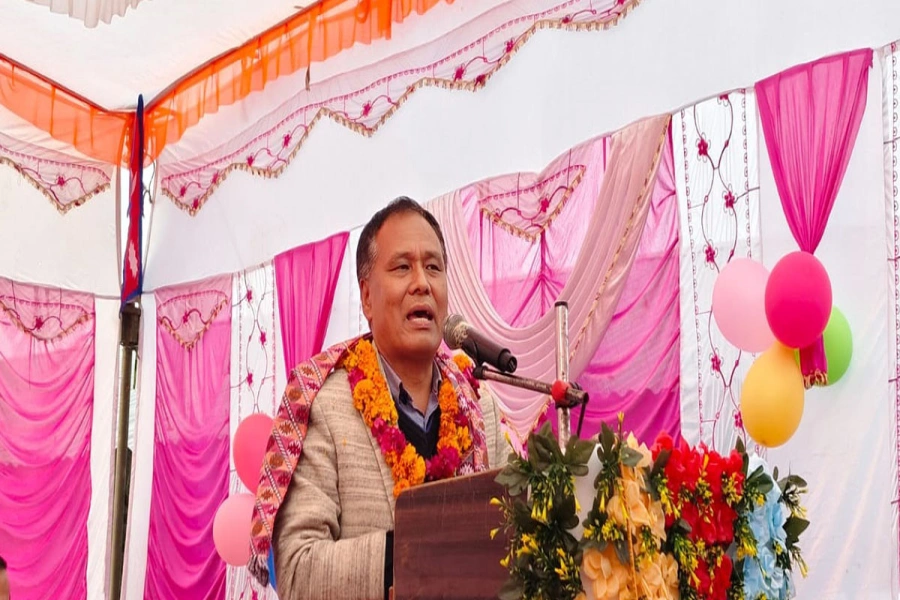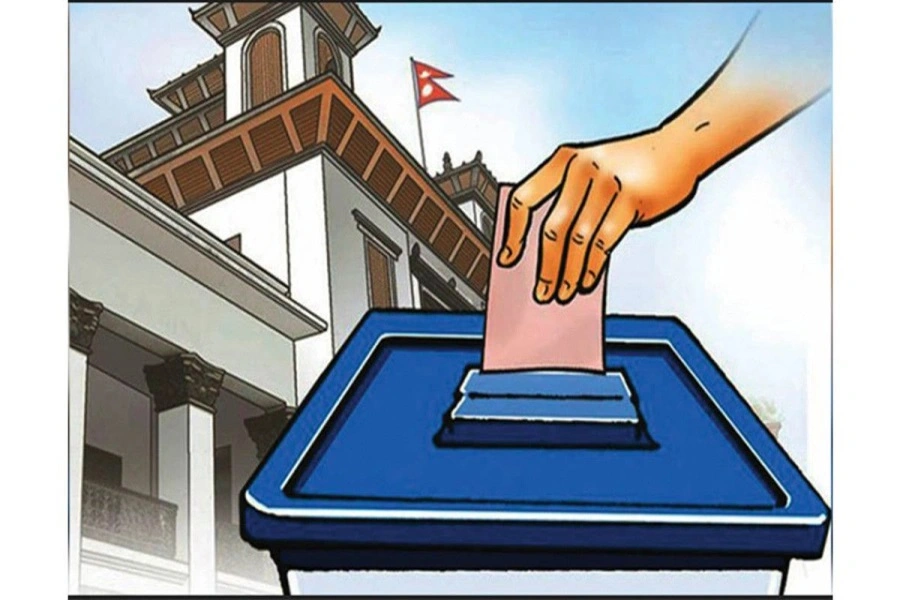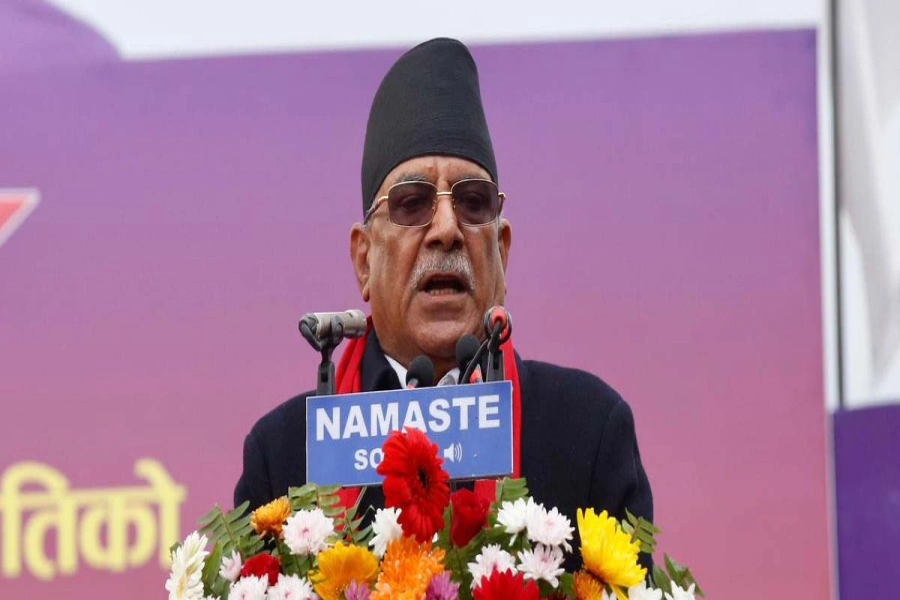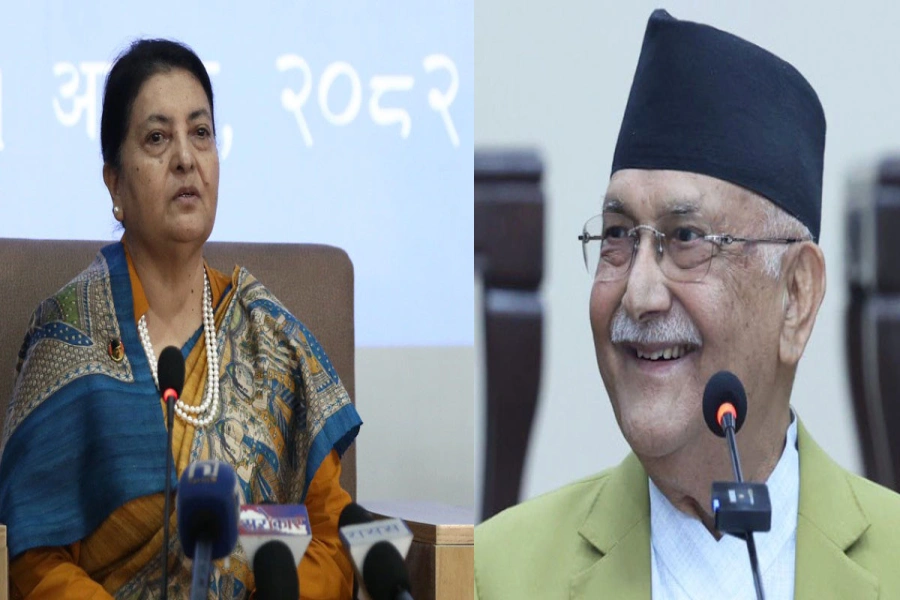KATHMANDU, Dec 21: In the first five months of the current fiscal year, the government's public debt liability has increased by about Rs 72 billion. By mid-November of the current fiscal year, the country's public debt liability had increased to Rs 2.37125 trillion.
Data released by the Public Debt Management Office (PDMO) shows that the country's public debt has been increasing as of mid-November. The country’s internal debt liability is Rs 1.197 trillion and external debt liability stands at Rs 1.173 trillion.
Economist Dr Dilli Raj Khanal says that the public debt of the country is increasing because the government is not able to collect revenue as per its target.
“There has been a continuous decline in revenue collection for the last few years. As a result of which the government is compelled to raise internal and external debts even for managing its recurrent expenditure,” he said, adding, “The share of public debt is also increasing due to the development of the wrong practice of the government investing more in non-productive sectors rather than in projects that give returns. This is not a good sign for the overall economy of the country.”
As of mid-August of the current fiscal year, the country's public debt stood at Rs 2.30986 trillion. By mid-November, the country's public debt liability had increased by nearly Rs 72 billion. According to PDMO, the public debt liability is increasing every month.
In a one-month period from mid-July to mid-August, the internal debt was Rs 13.6 billion, which increased to Rs 31.20 billion in mid-August to mid-September and Rs 53.5 billion in mid-September to mid-October. The public debt raised by the country in mid-October to mid-November was nil and Rs 14 billion in mid-November to mid-December.
Take prudent measures to curb public debt

Similarly, Rs 2.71 billion external loans were taken by the government in mid-July to mid-August, Rs 5.3 billion in mid-August to mid-September, Rs 7.5 billion external loans in mid-September to mid-October, Rs 1.87 billion in mid-October to mid-November and Rs 2.56 billion in mid-November to mid-December.
From mid-July to mid-December, the government raised a total of Rs 19.97 billion in external debt. The government paid Rs 42.84 billion towards internal debt in the first five months of the current fiscal year. Similarly, Rs 16.53 billion external debt was paid during this period.
Economist Khanal said that although it is not wrong for the government to take public debt, it should be very careful about which sector and how the borrowed money is spent.
"If the government takes a loan and spends it in productive and high-yielding areas, it would have a positive effect on the economy as a whole," he said.
As the government has not been able to collect revenue as per the target in five months of the current fiscal year, it has created a situation where the government has to take loans to meet its recurrent expenses.
The graph of the country's internal and external debt obligations is also increasing every month.
According to the data of the Finance Comptroller General Office as of December 19, the government’s expenditure is Rs 89.33 billion more than its income. To meet this budget deficit, the country is forced to take internal and external loans.
Double public debt in five years
Since the government is unable to collect revenue as per the target, external and internal loans are used as the main source of budget.
When the government prepares the budget, it sets the target for revenue collection as well as receiving foreign aid and raising internal and external debts. Public debt has more than doubled in five years.
Economist Khanal said that there is a sharp increase in the tendency of the government to take public loans.
"After 2014/15, the government has developed a tendency to take large amounts of internal and external debts. Recently, the share of public debt is increasing rapidly due to an imbalance in government’s finances.”
In the year 2018/19, public debt was Rs 1.048 trillion. That loan reached Rs 1.433 trillion in the year 2019/20. Similarly, in the year 2020/21, it reached Rs 1.737 trillion and it went further up to Rs 2.0119 trillion in the year 2021/22. According to the PDMO, by the end of FY 2022/23, Nepal’s public debt had reached Rs 2.29935 trillion.
What is public debt?
Generally, the debt taken by the government from inside and outside the country is called public debt. Loans taken from within the country are called internal loans and loans taken from outside the country are called external loans. In particular, public debt is taken to cover the government’s deficit budget.
In the same way, public debt is also taken to deal with economic recession, taming inflation, construction of the country's physical infrastructure, etc. Since the revenue collected in Nepal is insufficient to cover even recurrent expenses, there is a trend of taking foreign loans for infrastructure development.




































